 |
|

|
Broader Impact
During the last 10 years, I have been working with various partners for external engagement to increase the commercial and societal impacts of my research. Given the nature of my research on Cyber Physical Systems and Data Science with applications to Smart Cities and On-Demand Economy, I have been mainly conducting six kinds of external engagement activities for different projects as follows with extensive experiences.
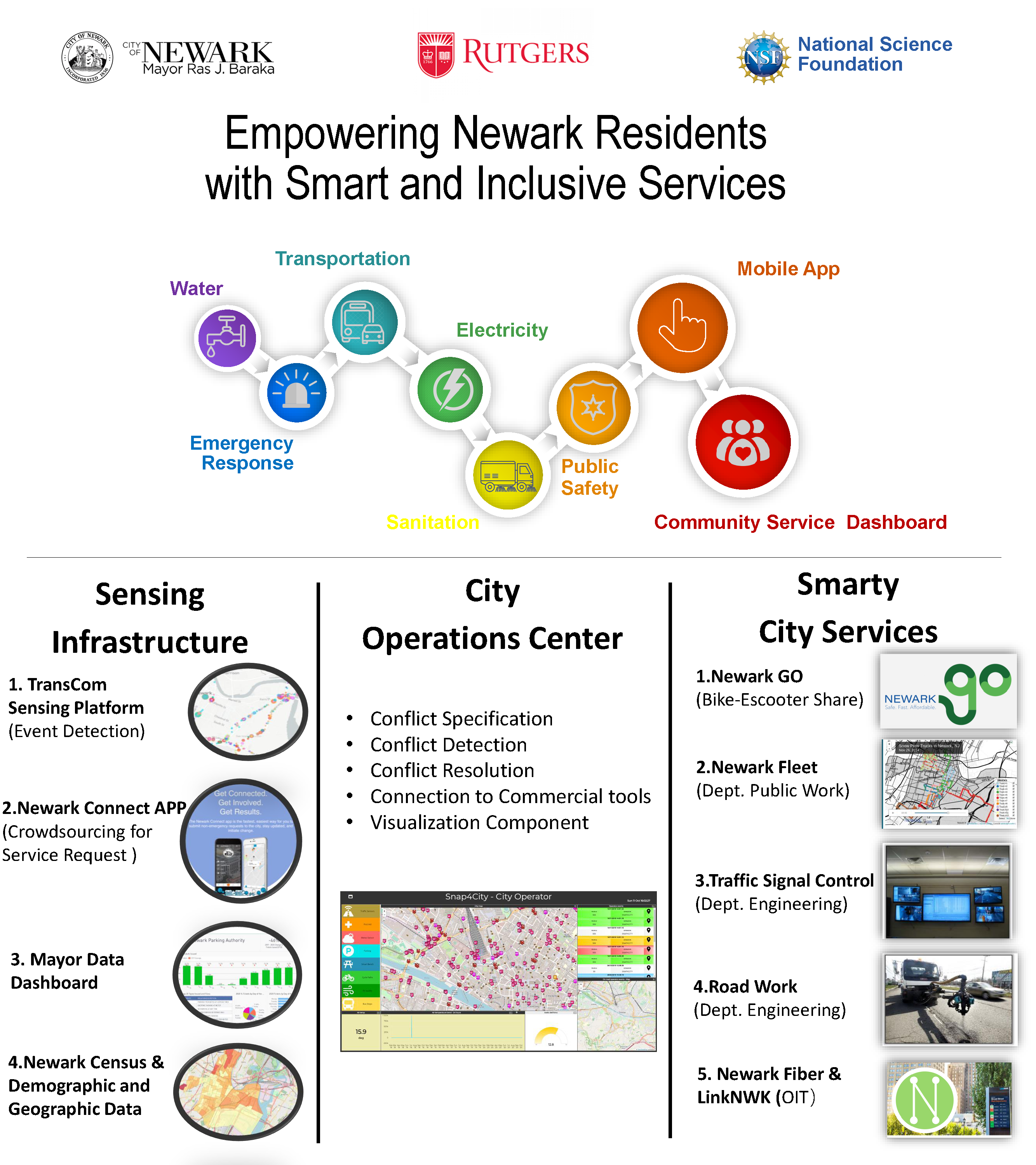
|
Impact on Newark NJ Stakeholders
As the lead PI, I am managing a 7 Co-PI
multi-university NSF Smart City project for a fairness-aware smart city service integration system called
Harmony to address city service conflicts considering social inclusion and equity.
|
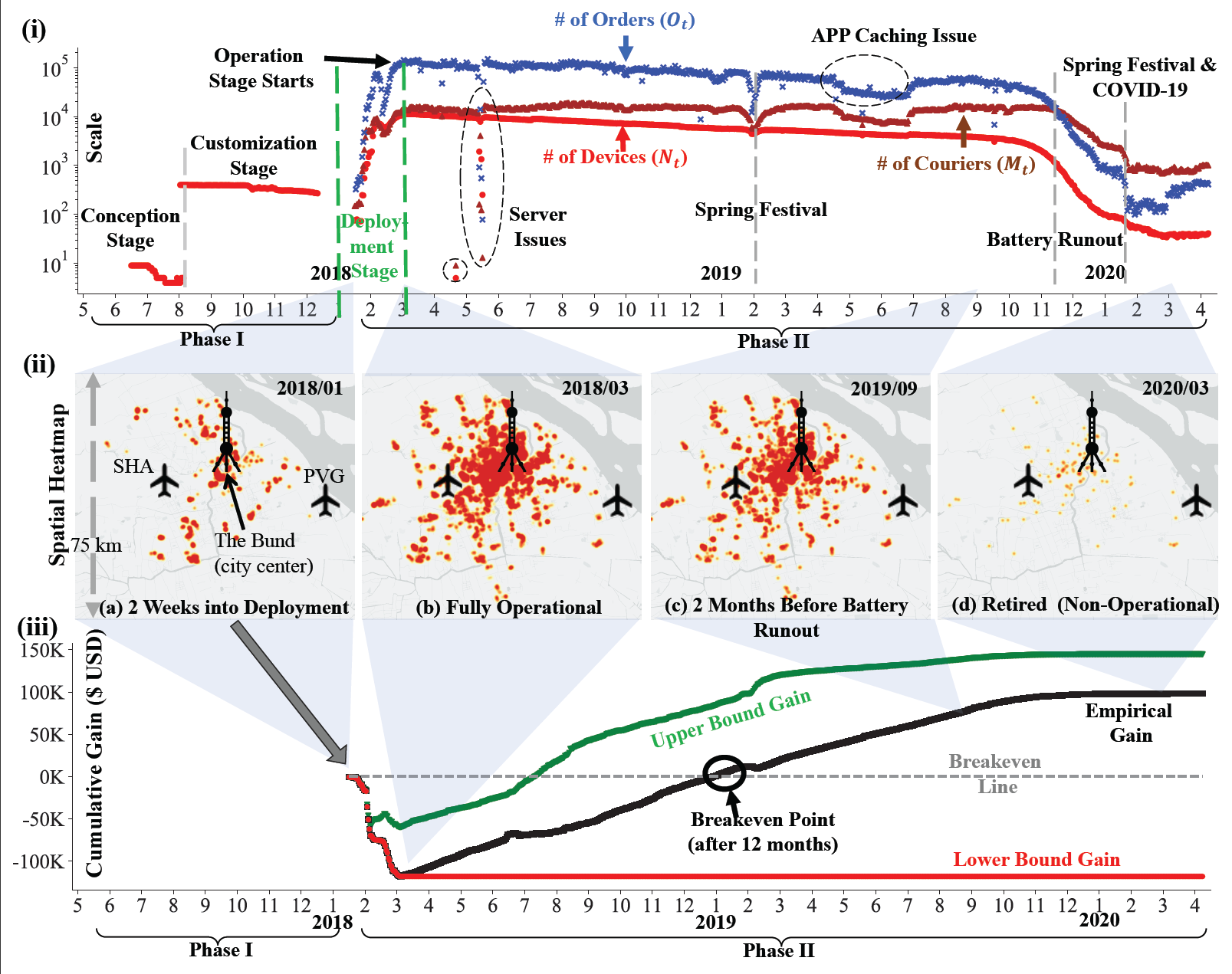
|
Impact on Alibaba On-Demand Delivery
Another major research direction of my group is related to the On-demand Delivery Platform to track delivery workers’ indoor and outdoor status, e.g., continuous locations.
My group has been working with the Alibaba engineering team in China for 3 years for a sensing system called aBeacon from 2017/05 to now.
As physical sensing devices in the aBeacon system, we prototype, deploy, and operate Bluetooth Low Energy (BLE) beacon devices at 12,109 merchants in Shanghai (one device per merchant) to detect the indoor locations of platform workers by addressing various technical challenges including reliability, utility,incentive, and lifetime.
However, it is challenging to scale this physical beacon system up nationwide with 6.7 million merchants because of the hardware, installment, and maintenance costs.
Thus, we have been adding a sensing module to the merchants’ smartphone apps to use their smartphones as virtual sensing devices under their consent to detect workers’ locations without deploying any physical beacon device.
We have been addressing various challenges related to energy, privacy, utility, privacy, and behavioral intervention.
This system has been deployed and operated at 355 cities in China to detect the locations of 6 million workers per day under their consent to assist the scheduling of 2.7 billion orders for 9 million customers.
This system has a direct impact to save the delivery platform $3.4 million in total by avoiding overdue penalties and to improve the accuracy of worker accounting data by 14.2%. |
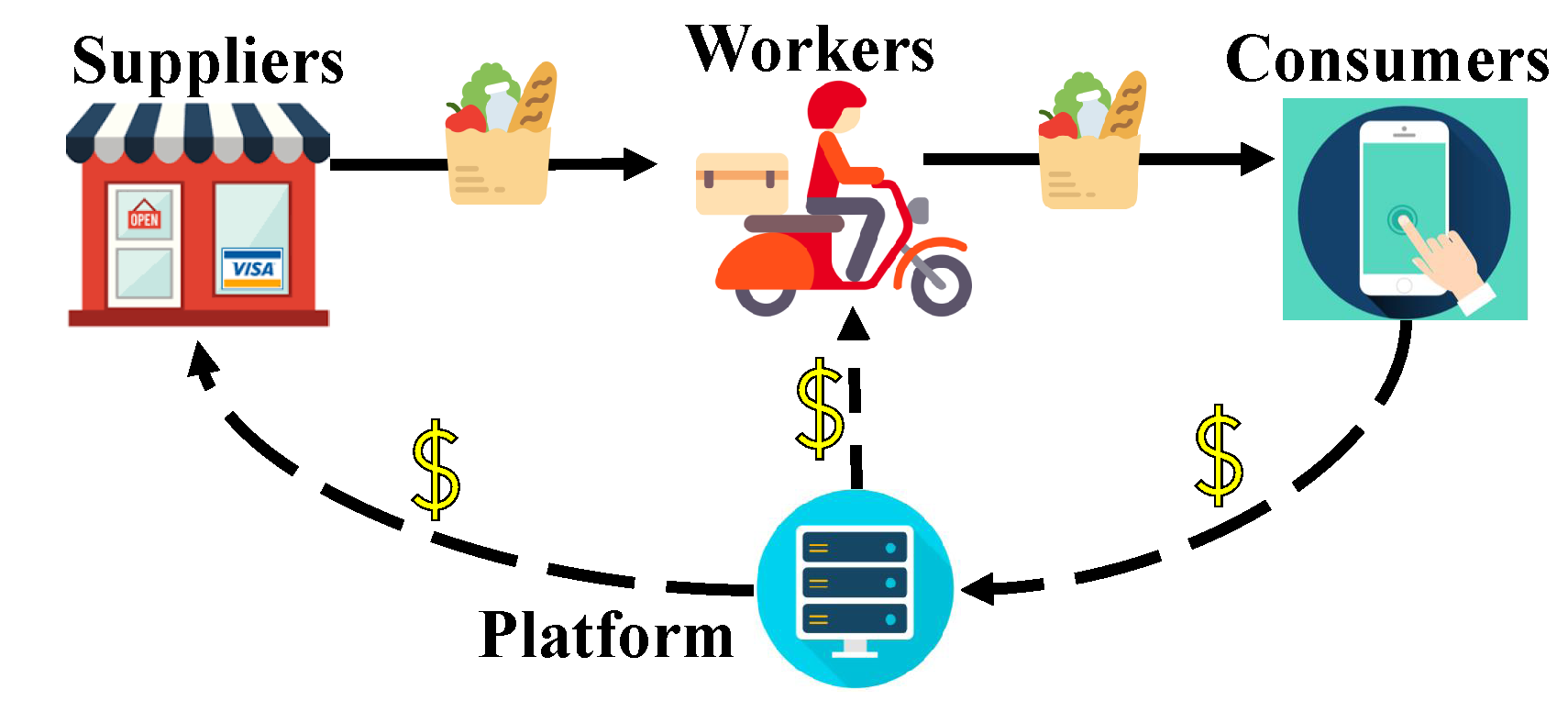
|
Impact on Gig WorkersAs part of our on-demand delivery project in the US, we are working with Amazon to provide high-quality targeted training opportunities to delivery workers with an intentional focus on underrepresented minority workers. The goal is to afford all workers a meaningful understanding of the ways Machine Learning and AI impacting their own work and income (e.g., matching delivery orders with them), which aligns with US Executive Order 13859 to “empower the American worker with AI-focused education and training opportunities”. We are working with Mr. Rimes the President of NJ Chapter of Black Data Processing Associates, and our collaborator Dr. Zhao at real-world delivery platforms including Amazon. This effort also has the potential to identify the job destruction that may occur, but more importantly the new jobs that are created by these on-demand delivery platforms, and assess their quality. In this case, they are delivery workers (e.g., gig workers) and local suppliers (e.g., small businesses). We plan to reach out to Labor Unions of gig workers and Small Business Association via a few workshops and their monthly meetings. Our key goal for these outreach activities is to convey that our work has the potential to make on-demand delivery more efficient to enable local small businesses(e.g., local brick-and-mortar retail) to reach online customers for “buying local and selling local” to help local delivery workers. |
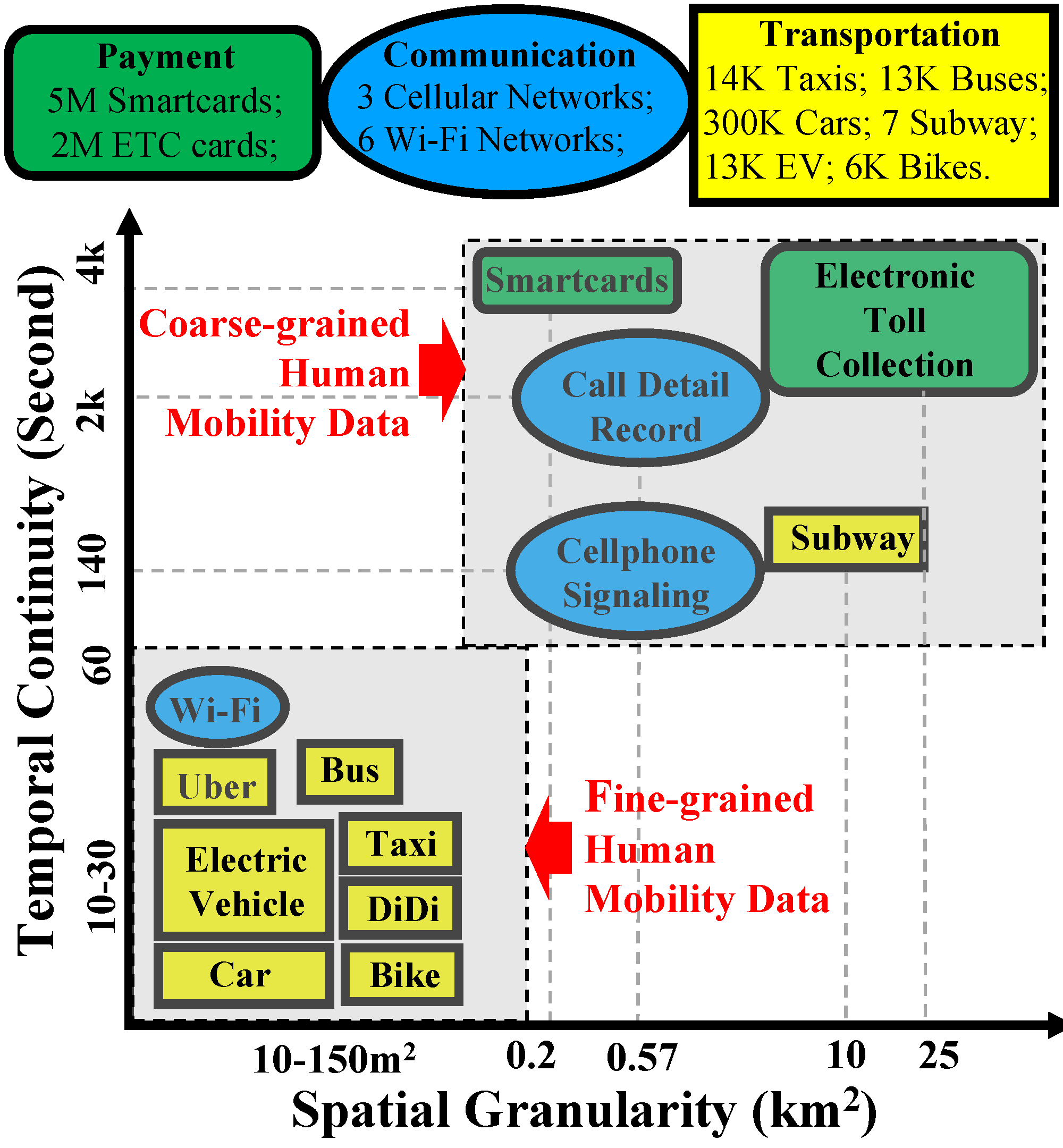
|
Impact on Mobility Researchers and Practitioners based on MobilityNetI have been leading a large interdisciplinary proposal team of 13 Co-PIs from 6 Universities and 14 collaborators for weekly preparation for a data infrastructure proposal. Google provides a seed fund of $16,000 for this work. The key idea of this project to consolidate 13 kinds of urban mobility data (Left Figure) to generate their synthetic versions (i.e., producing synthetic data based on real data) to share them with the research and industry community at large. In this project called MobilityNet (similar to ImageNet), I am leading engagement activities with 14 collaborators as mobility data producers and data consumers in public and private sectors for mobility data curation, data interpretation, data generation, and data use cases. I.Mobility Data Curation(1) Prof. Raychaudhuri is the lead PI of the NSF PAWR COSMOS project, which has been deployed in NYC as a wireless and sensing infrastructure to collect various data, e.g., video, audio, and wireless signals about vehicles and pedestrians under the consent of NYC government for smart cities applications. (2) Dr.Shu is a Senior Researcher at Microsoft working on an Edge Sensing and Computing platform in Bellevue, WA. (3) Dr.F.Zhang isDean of Shenzhen Institutes of Advanced Technology, who will provide us the access to Shenzhen data under NDA and identify new data sources and use cases. They are working with us as data providers for data curation. II.Mobility Data Interpretation(4) Mr. Reynolds from Princeton University is the founder and lead of the New Jersey Smart Cities Working Group, whose mission is to pursue collaborative research opportunities for Smart Cities among universities, industry, and government. (5) Ms. Hudson is the Executive Director of NSF Northeast Big Data Innovation Hub, whose mission is to build partnerships in the Northeast Region (Rutgers, Columbia, and NYU are active members) to address high-priority societal challenges with data-driven innovation. The hub hosts regular meetings to facilitate partnership building and the co-PIs have been actively attending. (6) Dr. Bhatt is a research fellow at Partnership on AI (PAI), which is a multi stakeholder organization with over 100 partners from 13 countries. Mr. Reynolds, Ms.Hudson, and Dr. Bhatt will help us to identify various new MobilityNet’s stakeholders including data users, data owners, data produces, and end users of data use cases for our Data Interpretation effort. III.Mobility Data Generation(7) Given development efforts required for MobilityNet, Dr. Hedrick, the director of Rutgers Laboratory for Computer Science Research, will work with us to identify two full-time programmers currently in his team to work for us. (8) Mr. Rimes, the president of the NJ Chapter of Black Data Processing Associates, which is the largest professional tech nonprofit for African Americans in the U.S., will work with us to identify suitable programmer candidates for us to hire to increase the diversity of our team. These full-time programmers will ensure the sustainability of MobilityNet. IV.Mobility Data Use Cases(9) Prof. Pentland, the Toshiba Professor at MIT at the MIT Media Lab, will work with us to further develop mobility use cases given his recent work on COVID-19 Observatory, which is a project between MIT and the World Bank for global tracking of real time evolution of the COVID-19 by quantifying the impact of mobility intervention. (10) Mr. Emanuel, the Chief Technology Officer at Newark NJ, will work with us to identify use cases including on-demand transportation for the spatial mismatch between housing affordability and jobs, and potential COVID-19 mitigation. (11) Ms. Valle, a Principal Member of Verizon 5G Ecosystem Team, will work with us to identify use cases in Verizon’s ongoing 5G-based autonomous shuttle and smart city programs e.g., for shuttle dispatching. (12) Dr. Kennedy, the researchdirector from Nokia Bell Lab, (13) Ms. Maillard, the Head of Siemens Corporate Technology, and (14) Ms. Perry, the Vice President of Dell Technologies will work with us identify the new use cases based on Bell Lab’s, Siemens’s, and Dell’s current products for AI and Smart Cities. The above partners in both private and public sectors will ensure the potential success of ourMobilityNetproject |
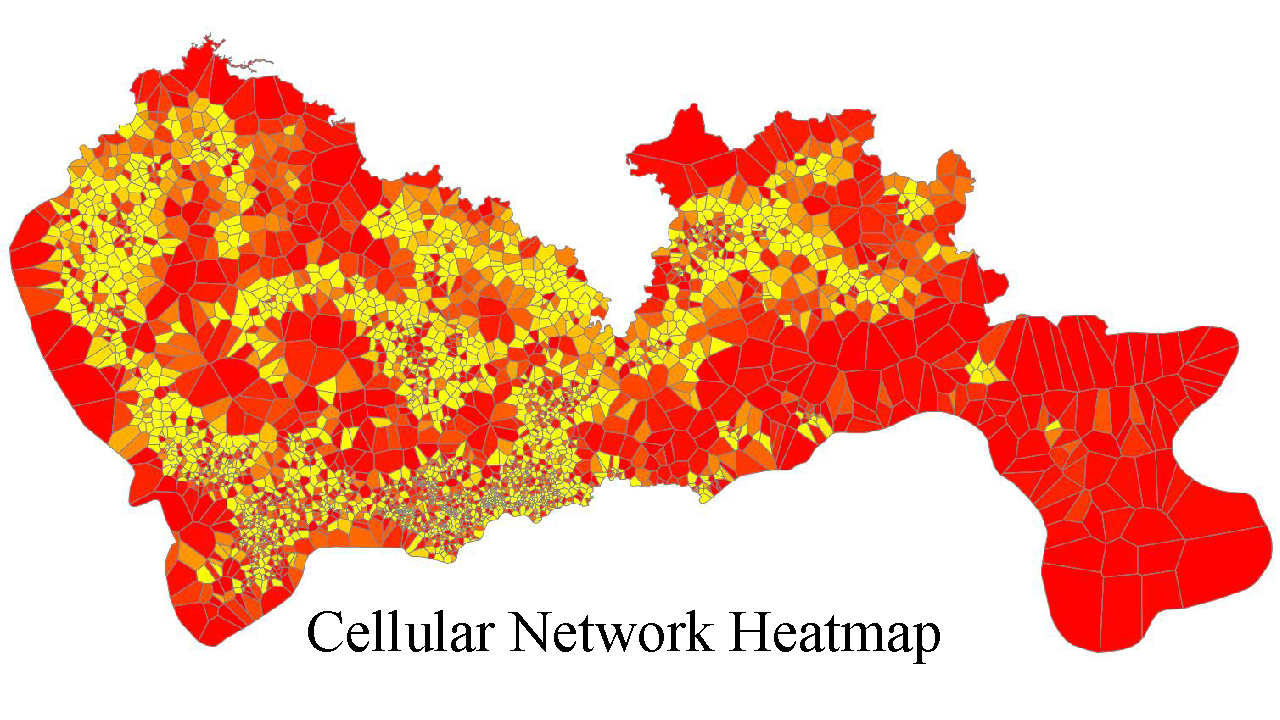
|
Impact on K-12 for EducationI have been working with three local high school students in Central New Jersey for the last 2 years. Rutgers Provost’s office is coordinating efforts across Rutgers to obtain peer mentors for K9 to K12 student outreach via two specific programs, i.e., Rutgers Summer Camps and Reboot. Built upon Rutgers Summer Camps, I have been working with two high school students this year, Kurt Hu and Collin Wen, from NJ Highland Park High School to foster their interests in Science and Engineering. |
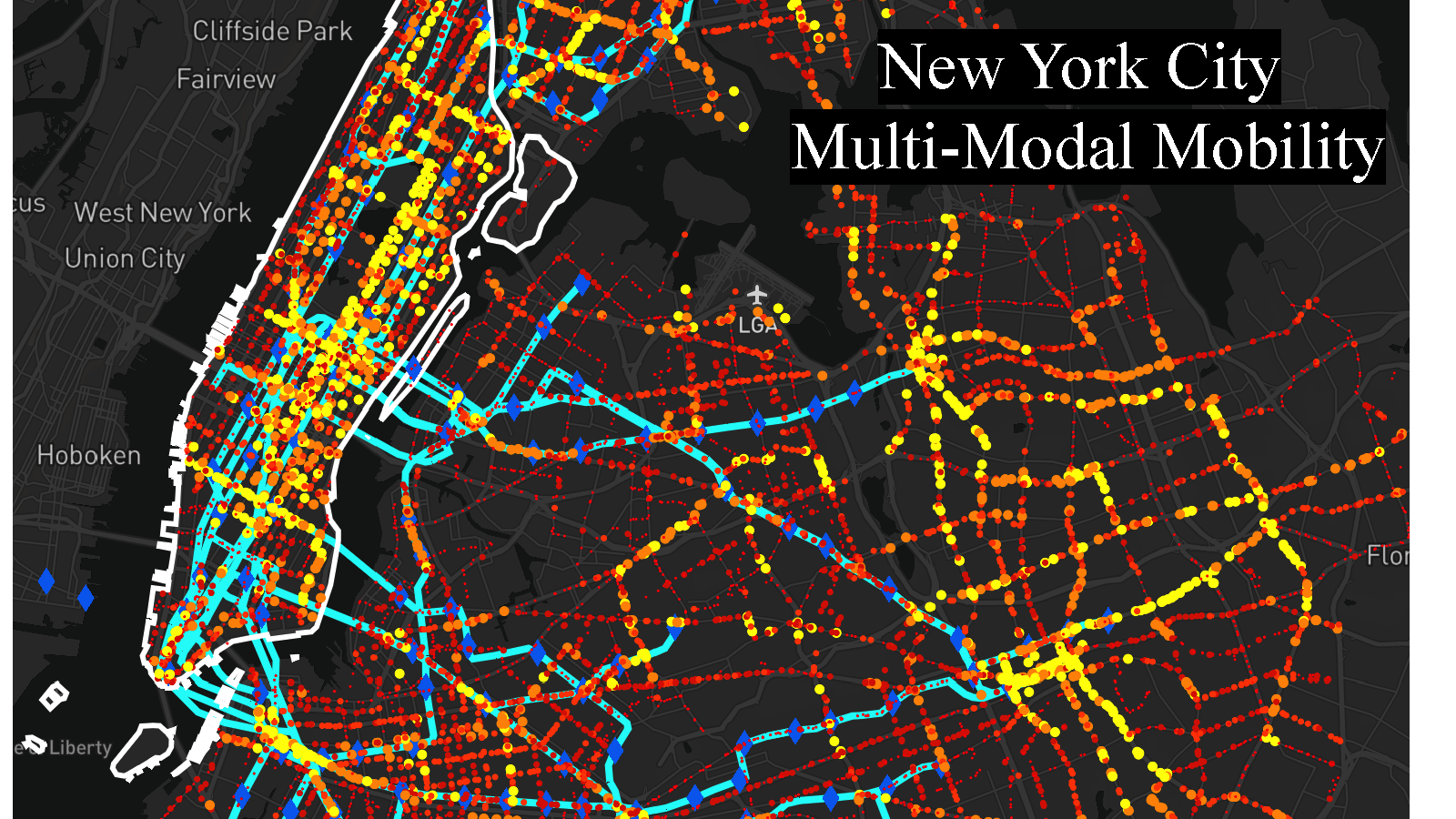
|
Impact on General Public for EducationVia my research projects, I have been organizing a few events for the Visualization Exhibition at Rutgers Zimmerli Museum on Smart Cities. In these events, I utilize research results to create urban-scale visualizations via real-world data and systems. To educate the general public, these visualizations presented intuitive patterns based on comparisons between different city domains. Instead of collecting admissions, a survey was conducted to serve as the evaluation results to quantify benefits. |